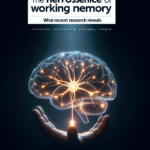The Future of Education: Integrating Assistive Technology for Diverse Learning Needs
Introduction
Imagine a classroom where every student, regardless of their unique learning challenges, is fully engaged and thriving. This vision is not just a dream; it is becoming a reality through the transformative powers of assistive technology. The future of education is at a crossroads, where the integration of innovative tools is not just a supplementary option, but an essential strategy for ensuring that every learner has the opportunity to succeed. In this article, we will explore how integrating assistive technology into educational settings can address diverse learning needs, fostering inclusivity and expanding possibilities for all.
Understanding Assistive Technology
Defining Assistive Technology
Assistive technology encompasses a wide range of devices, software, and services that support individuals with disabilities or learning challenges. These tools are designed to enhance learning by providing alternative means of receiving information or expressing knowledge. Examples range from speech-to-text software for students with dyslexia to specialized apps that help students on the autism spectrum navigate social interactions.
Importance in Education
The importance of assistive technology in education cannot be overstated. According to a report by the National Center for Learning Disabilities, students who engage with assistive technology demonstrate improved academic outcomes and greater self-confidence. By integrating these technologies, educators can tailor instruction to meet the varied needs of their students, creating a richer, more diverse learning environment.
The Landscape of Diverse Learning Needs
Recognizing Diverse Learners
Today’s classrooms host a multitude of learning styles and needs. According to the U.S. Department of Education, 14% of all public school students receive special education services, while many others may require additional support due to factors such as language barriers, socio-economic challenges, or giftedness. Understanding this diversity is critical for educators who aspire to foster an inclusive and effective educational environment.
The Role of Universal Design for Learning (UDL)
Universal Design for Learning (UDL) is a framework used to improve and optimize teaching and learning for all individuals through flexible approaches. UDL emphasizes customization, allowing students to engage with the content in ways that suit their learning preferences. Integrating assistive technology within this framework can dramatically enhance educational equity.
Case Study: The Use of Text-to-Speech Technology
Overview
One compelling example of assistive technology in action is the integration of text-to-speech (TTS) software in the classroom. Studies reveal that students with learning disabilities, such as dyslexia, benefit significantly from TTS tools, which help them access written materials more easily.
Implementation
At Elmwood Middle School, teachers implemented TTS technology for students struggling with reading comprehension. They noticed that over a semester, the reading proficiency of students using TTS improved dramatically, with 70% reporting increased engagement with reading tasks. This case underscores the potential of assistive technology in fostering an inclusive educational environment.
Analysis
This case exemplifies how targeted assistive technology can help meet diverse learning needs and reinforce the concept that effective teaching must be adaptive and personalized.
Integrating Assistive Technology into Classroom Practice
Steps for Successful Integration
-
Assess Individual Needs: Teachers should begin by evaluating the specific needs of their students. Tools like surveys or individual learning plans can help identify which technologies will be most beneficial.
-
Provide Training: Adequate training for both educators and students is crucial for successful implementation. Workshops can familiarize teachers with available technologies and demonstrate their effective use.
-
Create a Supportive Environment: Ongoing support and tutoring can help students feel comfortable using new technologies, ensuring they are not intimidated but instead empowered.
- Seek Feedback: Regularly collecting feedback from students can help educators fine-tune their approaches and ensure that the tools being used are effective.
Challenges and Overcoming Them
While integrating assistive technology offers immense benefits, challenges, including lack of funding, insufficient training, and resistance to change, can impede progress. Schools can overcome these hurdles through policy advocacy, community partnerships, and advocating for ongoing professional development programs.
The Role of Parents and Communities
Engaging Families
Engaging parents in the educational process is vital. Schools can educate families about assistive technologies and their benefits, encouraging them to advocate for necessary resources.
Community Partnerships
Collaborating with local businesses and organizations can lead to funding opportunities for assistive technologies. For example, partnerships can help schools acquire grants or donations to purchase new tools that enhance learning for all students.
The Future Landscape: Trends in Assistive Technology
Growing Accessibility
As technology continues to evolve, we observe a notable trend toward increased accessibility. Companies are investing in making mainstream products—such as smartphones and tablets—friendly to users with diverse learning needs, ensuring that these tools can be widely adopted.
Artificial Intelligence and Learning Analytics
AI is poised to revolutionize how educators approach personalized learning. Machine learning algorithms can analyze student data to recommend customized learning pathways, accommodating diverse educational needs on a large scale.
Gamification in Learning
Gamification is another emerging trend where educational content is presented as games. This approach captures student interest and can particularly engage those with learning challenges by combining fun with educational content.
Conclusion
The future of education promises a world where assistive technology is seamlessly integrated into learning environments, transforming challenges into opportunities for all students. By embracing assistive technology, we not only enhance educational equity but also empower educators to curate more diverse and inclusive teaching practices. As we move forward, it is essential for stakeholders—educators, policymakers, and families—to collaborate and advocate for the necessary changes that will enable all learners to thrive.
Actionable Insights
-
Seek Training and Resources: Educators should actively seek out training programs and additional resources to better understand and implement assistive technologies in their classrooms.
-
Collegial Collaboration: Teachers should share strategies and successes within their faculty to foster an encouraging atmosphere for the use of assistive technologies.
- Engage with Families: Schools should develop workshops and resources for parents to raise awareness about assistive technologies and their benefits, enabling them to support their children’s learning processes.
FAQs
1. What is assistive technology?
Assistive technology refers to devices, software, or services that aid people, especially those with disabilities, in completing tasks that might otherwise be difficult.
2. How can parents find out what assistive technology is best for their child?
Parents can consult with educators, evaluate assessments provided at school, and research options online to uncover technology that aligns with their child’s specific learning needs.
3. Are there costs associated with assistive technology?
Many assistive technologies can be costly, but there are often funding options available through schools, grants, or community resources.
4. Can assistive technology be used in general education classrooms?
Yes, assistive technology can be integrated into general education classrooms to enhance learning experiences for all students, not just those with disabilities.
5. How can community involvement improve access to assistive technology?
Community organizations and businesses can offer funding, resources, and training to support schools in implementing assistive technologies, thereby enhancing educational opportunities for all students.
Through these insights, we can take significant steps toward ensuring that the future of education truly supports diverse learning needs through the effective integration of assistive technology. As we continue to innovate, let’s remain committed to creating a more inclusive and equitable educational landscape for future generations.
















